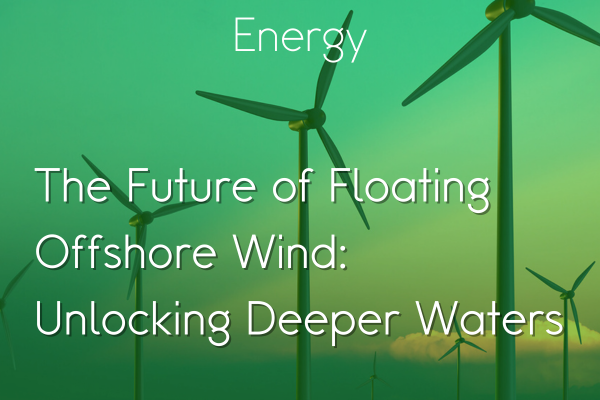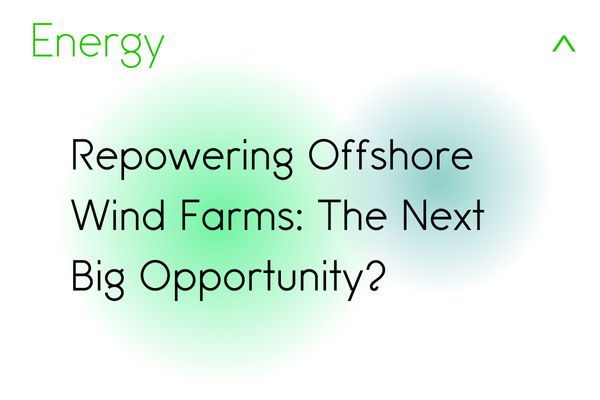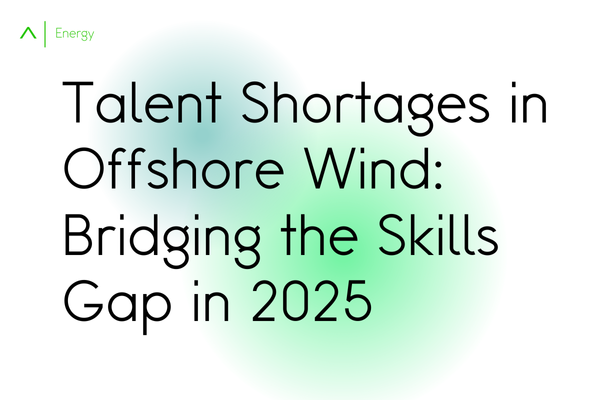The Future of Floating Offshore Wind: Unlocking Deeper Waters
27 Mar, 20254 minsThe global energy landscape is undergoing a profound transformation as the world seeks clean...

The global energy landscape is undergoing a profound transformation as the world seeks clean, renewable solutions to meet growing demand while addressing climate change. Among the most promising technologies emerging in this transition is floating offshore wind - an innovation that's opening vast new potential for wind energy generation in previously inaccessible deep-water locations.
Breaking Free from the Seabed Constraint
Traditional fixed-bottom offshore wind turbines have been limited to waters less than 60 metres deep, as they require foundations firmly secured to the seabed. This restriction has significantly limited deployment options, particularly in countries like Japan, France, and the US, where coastal waters quickly drop to greater depths.
Floating offshore wind turbines solve this fundamental challenge. By mounting wind turbines on floating platforms tethered to the seabed with mooring lines and anchors, these systems can be deployed in waters hundreds of metres deep. This technological breakthrough unlocks access to stronger, more consistent wind resources further from shore.
Why Floating Wind Matters Now
The potential scale of floating wind is staggering. According to industry experts, floating wind could potentially generate enough electricity to meet the world's total electricity demand 11 times over. In UK waters alone, floating turbines could unlock a potential resource exceeding 1,500 Terawatt hours per year – far beyond the nation's projected future electricity needs.
Europe, with approximately 80% of its offshore wind resources located in waters deeper than 60 metres, stands at the forefront of floating wind development, with more than 40 GW of planned capacity by 2035. The UK leads this charge with the world's most advanced pipeline of floating projects, representing over 24 GW of potential capacity.
Challenges and Solutions for Industrial Scale
While the technology shows immense promise, bringing floating offshore wind to commercial scale requires addressing several key challenges:
- Design and Engineering: Various floating foundation designs are competing for market dominance, including semi-submersible platforms, spar buoys, and tension leg platforms. Companies like GustoMSC have been developing designs like the Tri-Floater since 2002, emphasising safety, scalability, and efficiency in production.
- Supply Chain and Manufacturing: Scaling production requires industrialised processes and expanded supply chain capacity. The UK has identified eight areas where it already has strong capability, including anchors and moorings, array cables, and maintenance services.
- Installation and Maintenance: New vessel designs, like GustoMSC's Enhydra Floating Wind Installation Vessel, are being developed specifically for the deployment of floating foundations, mooring systems, and dynamic power cables.
- Cost Reduction: Through economies of scale, learning by doing, and technological innovation, the industry aims to reduce costs by approximately 30% by 2030. Analysis shows that floating offshore wind could target a cost of under £100/MWh by 2030, and below £70/MWh by 2050.
Economic Opportunity on a Trillion-Pound Scale
The global floating offshore wind market represents an opportunity worth approximately £1 trillion by 2050. For countries positioned to capture this market, the economic benefits are substantial. The UK, for example, has estimated that its floating wind sector could contribute £47 billion to its economy and create up to 97,000 jobs by 2050 through both domestic supply and exports.
For regions like Scotland and Wales, floating wind represents a significant economic diversification opportunity. The 60% skills overlap between the UK's existing oil and gas sector and floating offshore wind provides a major transition pathway for workers and companies as North Sea fossil fuel production declines.
The Path Forward
To realise the full potential of floating offshore wind, industry experts have identified several priorities:
- Port Infrastructure Development: Building sufficient port capacity for assembly and deployment, with the UK alone requiring investment of £3-4 billion by 2040.
- Transmission Planning: Developing integrated grid connection strategies for offshore wind farms located far from shore.
- Supply Chain Growth: Supporting domestic manufacturing capabilities to capture maximum economic value.
- Standardisation: Focusing design approaches to enable efficient scaling of manufacturing and installation.
- Innovation: Continued investment in R&D to solve technical challenges and drive cost reduction.
Leading Players Driving the Technology Forward
Several companies and organisations are at the forefront of floating wind development:
- GustoMSC has been pioneering floating foundation designs like the Tri-Floater and developing specialised installation vessels through their Enhydra series.
- JDR Cable Systems is leveraging its offshore oil and gas expertise to develop dynamic cables specifically designed for the unique challenges of floating installations.
- PICT Offshore in Scotland is creating innovative access systems that improve safety and efficiency for maintenance crews working on floating turbines.
- The Offshore Renewable Energy (ORE) Catapult and Floating Offshore Wind Centre of Excellence in the UK are coordinating research efforts and supply chain development.
The Outlook
As floating offshore wind technology matures and costs continue to fall, we can expect to see rapid acceleration in deployment through the 2030s and beyond. The technology will play a crucial role in helping nations achieve their net-zero targets while creating new industrial opportunities around the globe.
For the renewable energy sector, floating wind represents not just an incremental improvement but a transformative capability that dramatically expands the potential scale of offshore wind energy. For countries with the right combination of natural resources and industrial capabilities, it offers a once-in-a-generation opportunity to establish leadership in a trillion-pound global market.
The race to harness the power of deeper waters is well underway, and those who move quickly to develop the necessary infrastructure, supply chains and expertise will be best positioned to reap the economic and environmental benefits of this promising technology.



